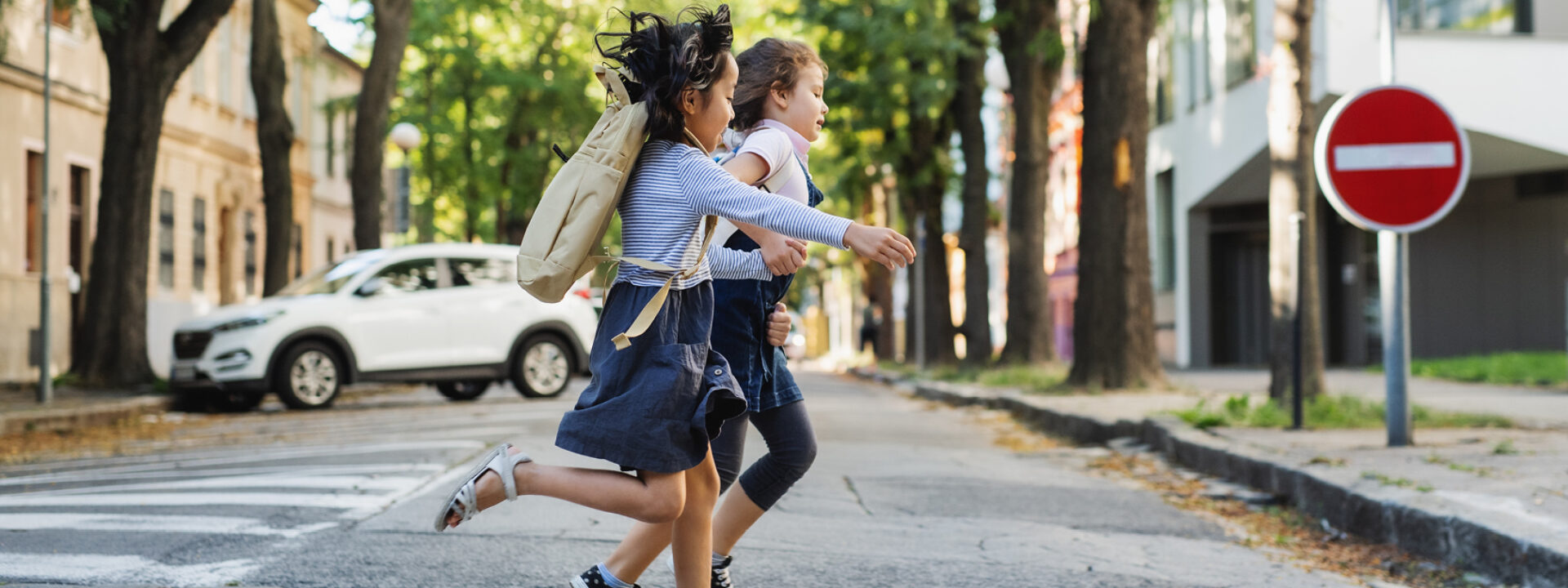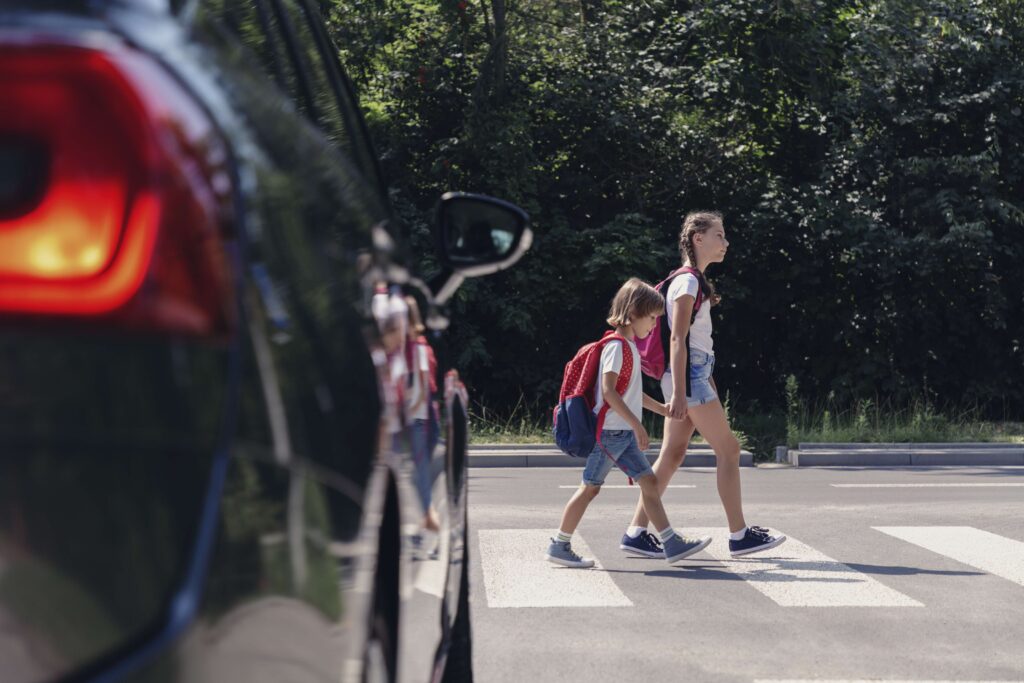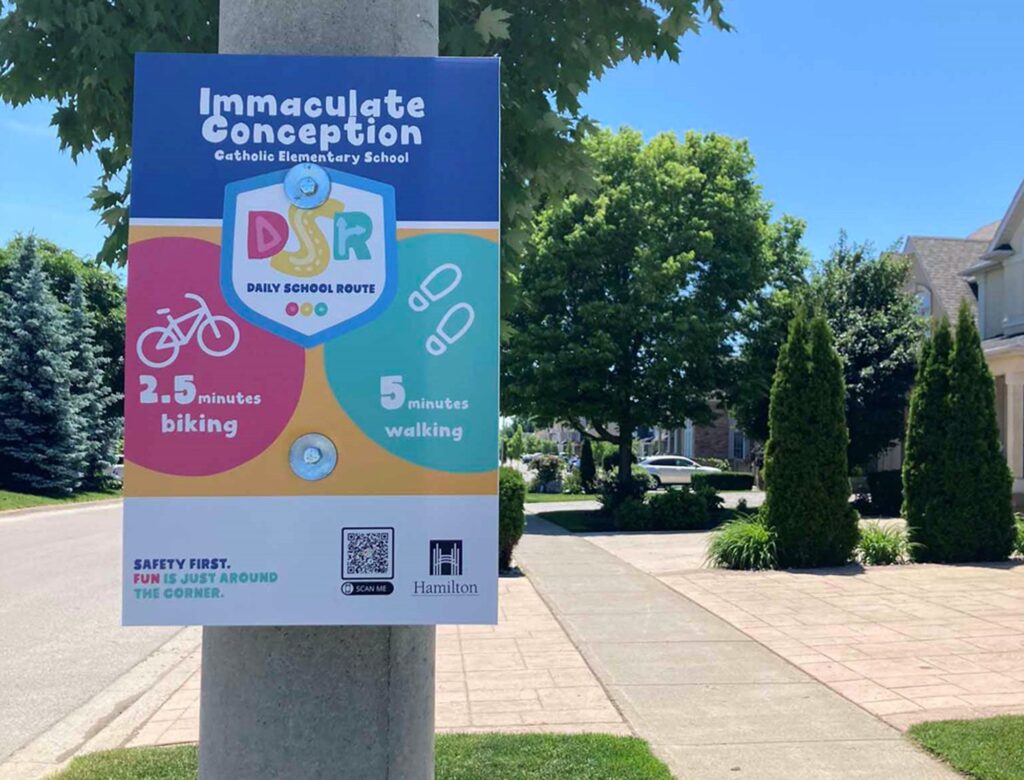Getting schooled on safer streets

The goal of the Daily School Route is to see 100 per cent of students who live close enough walking or wheeling to/from school daily, regardless of age, ability, or personal circumstance, so that they can experience the benefits of active transportation.
In the last municipal election campaign, the issue of safer streets was a common theme across neighbourhoods city-wide. Residents told many candidates that they didn’t feel safe walking in their communities because vehicular traffic was creating a dangerous environment for pedestrians.
This impacts all members of the community including kids, many of whom make the trip to and from school each day. Some of these kids walk or wheel to school, but many others make the trip by car due, in part, to the unsafe environment.
In fact, fewer and fewer students are walking or cycling to school. From 1986-2011, the rate at which Greater Toronto and Hamilton Area (GTHA) students 11-13 years of age were driven to school doubled, according to a Metrolinx study. At the same time, the percentage of children walking and cycling fell from 62 per cent to less than half. Today, this problem persists, as more recent data shows that less than 40 per cent of students in Hamilton are using active transportation (walking, cycling, etc.) to get to school.
Why is active school travel important?
Using active transportation to get to and from school has numerous benefits to a child’s health in both the short and long term.
First, active transportation helps kids reach the recommended 60 minutes of daily physical activity. Second, walking to school prepares the brain for learning by improving alertness, attention, and motivation. As a result, walking to school is associated with better academic performance. Third, when a child walks or bikes to school, they arrive at school feeling less stressed, which allows them to interact with others and learn new things more easily. Fourth, active transportation exposes children to morning sunlight, which is one of the key pieces of information that our body uses to regulate our energy levels. Fifth, walking to school connects children with their neighbourhood and gives them an opportunity to develop key independent life skills like navigation and arriving at a destination on time. Finally, studies show that allowing children to engage with each other in unstructured settings, such as the walk to school, promotes creativity, problem-solving, and positive emotional development.

From a broader community perspective, active school travel reduces the number of car trips taken, which has environmental, social and economic benefits, including less carbon emissions and reduced wear and tear on our roads.
So what can we do to boost active school travel rates?
To start with, we need to understand that there are many different but connected issues affecting the decision to walk/wheel to school. For example, traffic safety, street design, cycling networks, family schedules, public awareness, distance to school all come into play. What is required is an approach that reflects this reality.
Since 2020, a program called the Daily School Route (DSR) has been working to address this. The DSR is an approach to active school travel that looks at the issue differently. The DSR sees kids as “transportation users” within their own system and creates a network of routes, called Student Streets, to help facilitate safe and effective active school travel. These Student Streets are contiguous routes to school that should be designed to be safe, convenient, and attractive for elementary school students to use for active transportation. Students are inventive in how they travel, frequently taking the most convenient route for them. In many neighbourhoods, this can mean venturing away from the roadway and using other facilities like parks, alleyways, and neighbourhood cut-throughs. Students connect these different land uses with their routes to school.
The goal of the DSR is to see 100 per cent of students who live close enough walking or wheeling to/from school daily, regardless of age, ability, or personal circumstance, so that they can experience the benefits of active transportation. So far, the Daily School Route has been introduced at 25 schools across Hamilton and, with support from the Patrick J. McNally Foundation, engagement with elementary schools significantly increased during the 2021-2022 school year. You may have seen some DSR street signs around your neighbourhood as more and more Student Streets are implemented.

So what has been learned so far? Based on engagement with almost 1,500 families across participating elementary schools, data indicates that only 39 per cent of respondents use active transportation to get to school, despite 64 per cent of them living within 1.6 kilometres of school, and thus not eligible for busing. Meaning, hundreds of these families do not use active transportation to get to school despite being deemed close enough by our school boards’ transportation bodies. If we scale these numbers to Hamilton’s entire elementary school population, there are thousands of students in Hamilton who could be using active transportation but are not.
The DSR has also been able to learn about the effectiveness of current safety measures. For example, the existing approach to creating a safer pedestrian environment around schools involves the creation of school safety zones that are identified within 150 metres of a school boundary. Inside this zone, speed limits are reduced to 30 kilometres per hour. While this helps make the environment immediately around a school safer, it doesn’t reflect the reality of the full walking trip to school. DSR data confirms that many students are walking/wheeling from distances beyond 1 kilometre. Thus, in order to be effective, these zones need to be expanded to match the distances students are actually walking.
The speed of traffic is another very important factor at play. Respondents to DSR engagement frequently cite speed and unsafe streets due to traffic as a top reason for why they currently don’t walk to school. Further, they cite speed reduction as a priority change that would encourage more active transportation. As it turns out, transportation research backs up these concerns. Research from the Organisation for Economic Co-operation and Development (OECD) demonstrates that if hit at 50 km/h there is a very high likelihood of a pedestrian fatality. Comparatively, at 30 km/h the chance of death is 10 per cent. Other research shows that as impact speed increases past 30 km/h, risk of severe injury increases. Therefore, reducing speed limits by 10 km/hr in areas concentrated with vulnerable populations, such as school zones, significantly reduces the risk of serious injury and fatality.
The good news is that speed limit reductions and the size of school safety zones are tools entirely within our control as a community, so there is nothing preventing us from designing our neighbourhood streets with an understanding of the full trip to school in order to create routes for students that are safe.
Family-friendly community planning
Building on early momentum, the DSR has expanded its approach to look at an entire city ward, which is a more effective way to capture information about the active school travel environment among several schools that are geographically co-located. With routes identified for several schools at once, necessary safety improvements are flagged to make the Student Streets safe, convenient, and attractive. When combined with ward-wide improvements, such as speed limit reductions, what results is a ward strategy to create safer streets for all residents.
At the core, that is what this is all about. While the goal of the DSR is to get more kids walking and wheeling to school on a daily basis, at the end of the day, we are striving for more family-friendly community planning that encourages healthy lifestyles. An elementary school is typically a centrepiece of a neighbourhood and it becomes a focal point for travel twice a day for children and parents. Thus, how well streets are functioning for the trek to school is a good indication of how well the streets are functioning in general. Moving forward, school communities should be more involved in the planning of the neighbourhoods in which they are located. This would lead to more holistic, safe and healthy neighbourhoods over the long-term, benefitting all community members.
Paul Shaker is a Hamilton-based urban planner and partner with the Daily School Route.






